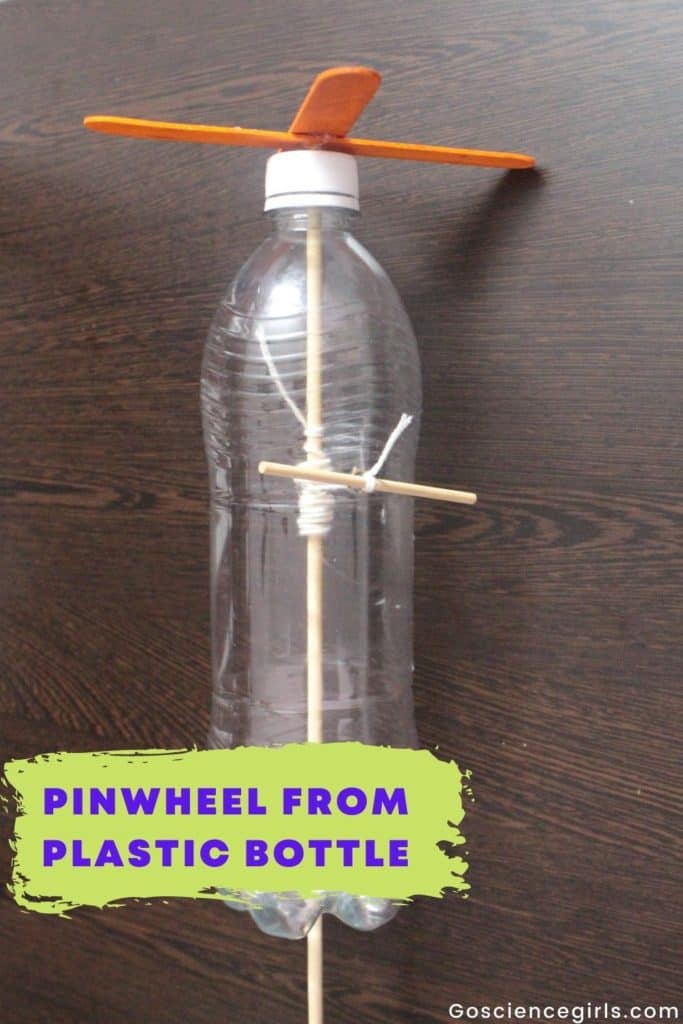Pinwheels are the delight of children. A carnival, an exhibition, or a candy store; they have it all. Something bright and moving always attracts kids’ attention, as is the case with pinwheels. What they don’t realize is that there is a science to everything.
A wind-dependent pinwheel has a different working compared to a self-retracting one. This DIY self-retracting pinwheel is easy to make. The self-retraction part is where physics comes into effect.
Self Retracting Pinwheel
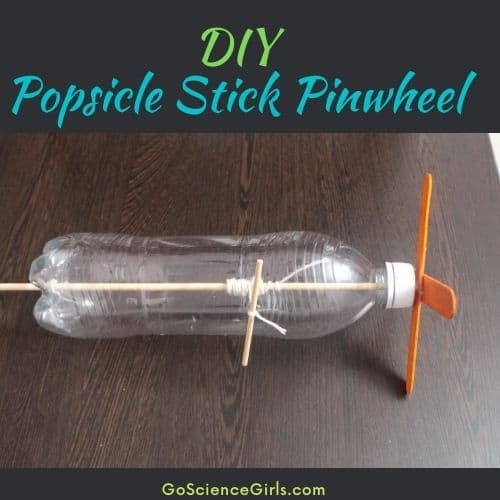
Things Needed
- Popsicle sticks – 2.
- A Plastic Bottle – transparent.
- A Skewer – length a little more than the bottle, breadth the size of the screw you are about to select.
- A Small stick – one-third the length of the skewer taken.
- Glue – should be a strong adhesive.
- Heat source – candle/lighter.
- Thread – strong enough to tolerate continuous force applied to it – thrice the length of the bottle taken.
- A pair of scissors – to cut the thread.
- A Marker – should be of a darker colour than the Popsicle sticks.
- A Screwdriver – to burn holes.
- A Screw – to make holes.
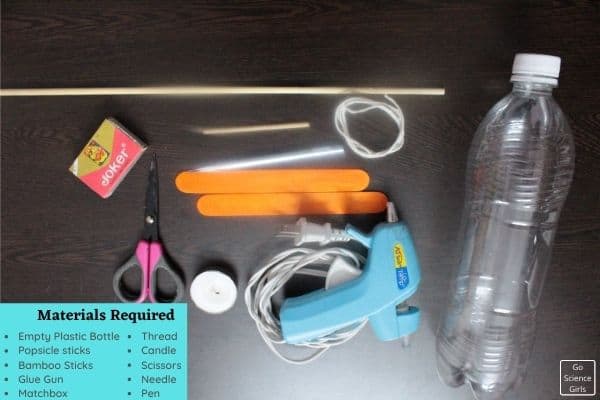
Steps to Make Pinwheel
Take the 2 Popsicle sticks.
Mark them with the dark marker at precisely the center of the Popsicle sticks.
Make holes at the marked points with the screw.
Keep the pointy end of the screw at the marked point and push its head with your thumb. Repeat this continuously, and you have a hole in the Popsicle sticks.
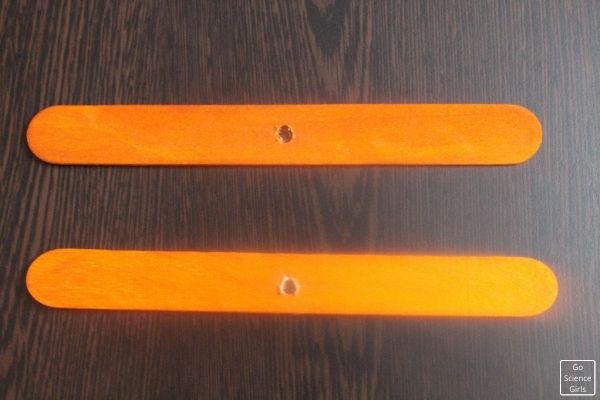
The next steps involve three of the materials: Two Popsicle sticks and One Skewer.
Apply the glue at these marked points and place the Popsicle sticks over the other in a cross fashion, with their holes coinciding.
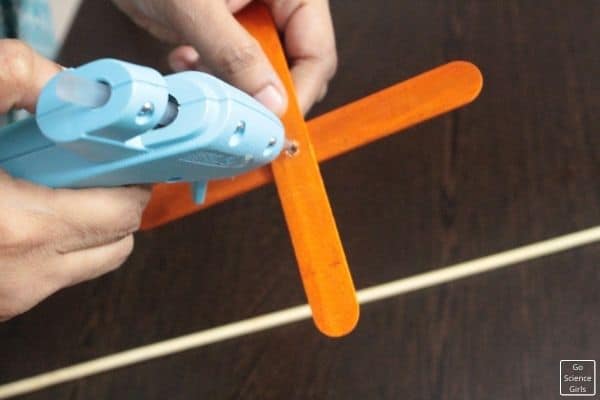
Quickly, pass the skewer through the coinciding holes before the glue dries up.
The cross of Popsicle sticks should be fixed at one end of the skewer.
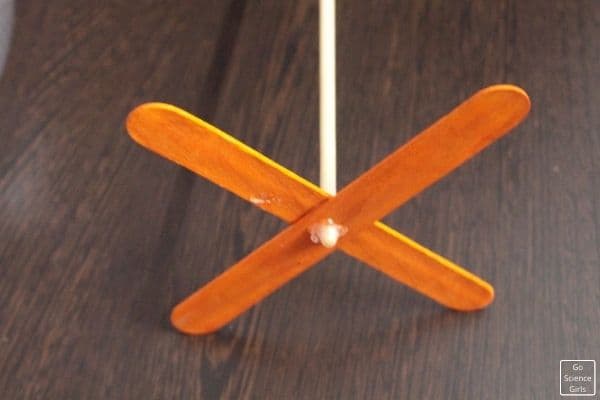
The next steps are to prepare the bottle: making three holes in it.
Mark the bottle at the three places with the dark marker:
First, at the center of the cap of the bottle,
Second, at the center of the body of the bottle, and
Third, at the center of the base of the bottle
Take the screwdriver, and heat its tip with a candle or lighter.
While applying pressure, push the hot tip of the screwdriver through the above three marked holes. The hot screwdriver melts the plastic, and hence, the holes form.
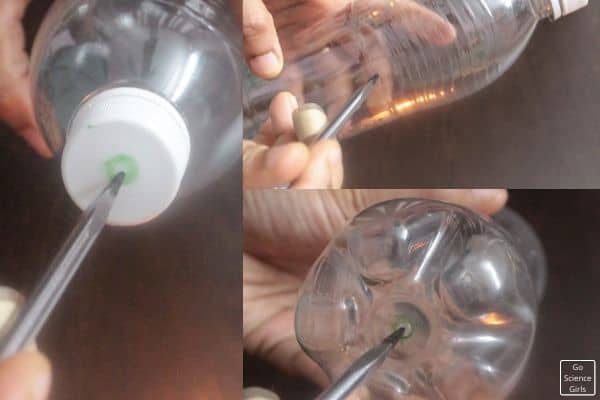
The next steps are how to incorporate the ice cream sticks cross-skewer contraption into the three-holed bottle.
Take the small stick and tie one end of the thread at its middle in a tight double knot. The knot should be tight enough that it does not displace from the center of the small stick.
Uncap the bottle.
Put the other end of the small stick-tied thread through the mid-body bottle hole, and pull it through the mouth of the bottle.
Take the cap, and through the cap-hole, pass the other end of the ice cream sticks cross-skewer along the length of it until the cap is behind the ice cream sticks-cross.
Tie the other end of the loose thread coming out of the bottle mouth to the one-third length of the ice cream sticks-cross-skewer in a tight double knot.
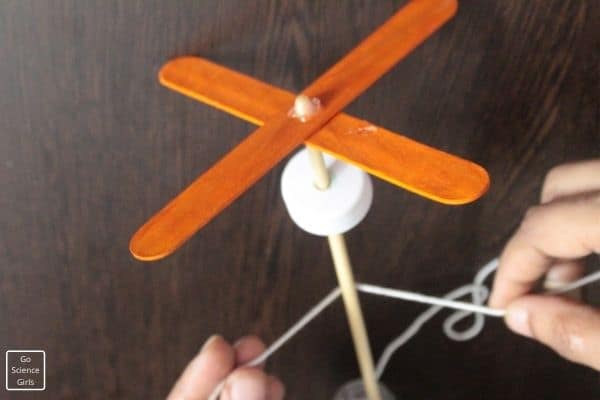
The knot should be tight enough that it does not displace from the one-third point.
Put the ice cream stick-cross-skewer with the cap pierced in it through the bottle mouth. The manner of it should be such that the ice cream sticks-cross part of it should be towards the bottle mouth and end, and the other of it should be towards the base-hole of the bottle.
Close the mouth of the bottle.
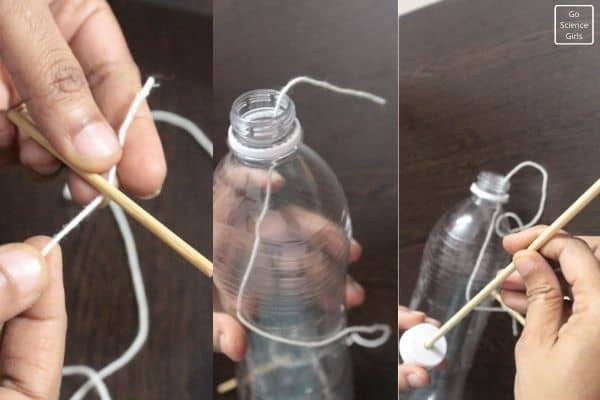
Rotate the skewer clockwise by holding on to the extra length of the skewer protruding out of the base-hole. This is to wind the thread attached to it at the one-third point.
Keep rotating it until the entire loose thread winds around the skewer inside the bottle and the small stick attached to the thread’s other end constricts any further rotation.
Now, let’s put the gadget to action.
The small stick acts as a handle. Pull the handle completely to unwind the thread entirely. Let go of the handle.
As soon as you let go of the handle, the skewer self-retracts and rewinds the thread to itself, anticlockwise.
The ice cream sticks-cross attached at the bottle mouth end of the skewer mirrors the motion attached to it.
Hence, this is how the motion of the pinwheel comes about on the application of external force by the handle.
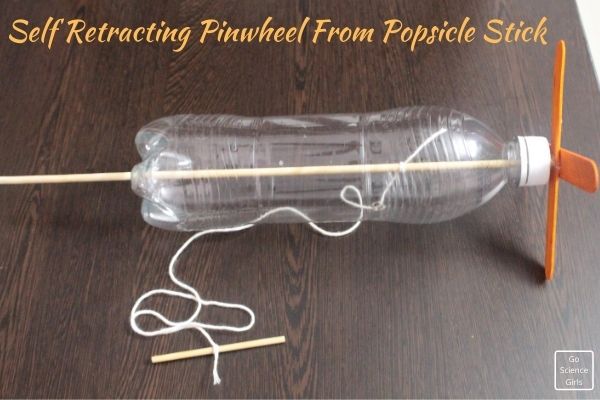
Science Behind the Self Retraction
The scientific background of how a pinwheel works involves force and motion.
These concepts of applied force, stress, restoring force, Newton’s laws of motion, and to some extent, angular momentum give a better understanding of how a self-retracting pinwheel works.
For a better understanding of the entire working, the explanation is divided into two systems:
1. Small Stick/Handle and Skewer
This system works on the three laws of motion proposed by Newton. According to the first law of motion, an object at rest can only be brought into motion if any external force is applied.
In a self-retracting pinwheel, the small stick which acts as a handle is pulled. This pulling is the external force applied in this case.
The pulled force results in the development of the velocity of the thread wound around the skewer.
The velocity here measures the speed with which the thread rewinds itself around the skewer. Here is when the second law of motion comes into play.
The amount of force applied is equal to the product of mass and acceleration of that particular object.
In the case of a self-retracting pinwheel, the velocity of the thread moving depends upon the force and mass of the small stick, i.e., the handle.
The final and third law of motion states that every action has its equal and opposite reaction. The restoring force can practically witness this as a result of the stress of the thread.
When the handle attached to the string is pulled, an external force is applied indeed; and this action is equally and oppositely balanced by the restoring force.
This restoring force pulls the handle back to its initial position, conserving the third law of motion.
2. Skewer and Ice cream sticks-Cross
The skewer and ice cream sticks-cross system works based on angular momentum. Angular momentum attributes rotational inertia and angular velocity.
When the handle is pulled to rotate the skewer, this motion induces rotational motion in the ice cream sticks-cross.
As a result of this pulling, the rotational inertia and angular momentum are introduced to the system. Angular momentum has an inherent property of being conserved unless an external torque (force in rotational motion is torque) interferes with the system it is acting in.
So, when the external torque in the form of pulling of the skewer is initiated, the ice cream sticks-cross is now a product of rotational torque.
Now, this cross has rotational inertia and angular velocity. The rotational inertia does not change as there is no disturbance in mass distribution.
However, to balance this, no change, an increase in angular velocity is observed. This increased velocity is what lets the ice cream sticks-cross rotate or simply spin.
Inference In conclusion, when the handle is let go of, everything returns to normal. Force shifting from producing angular velocity to restoring force conserves angular momentum in the first system.
All the systems are at rest, and no external force is applied to the entire self-contracting pinwheel system.
If you like DIY STEM Projects for Kids, you might love these projects:
Explore Atmospheric Pressure with Drip Drop Bottle
